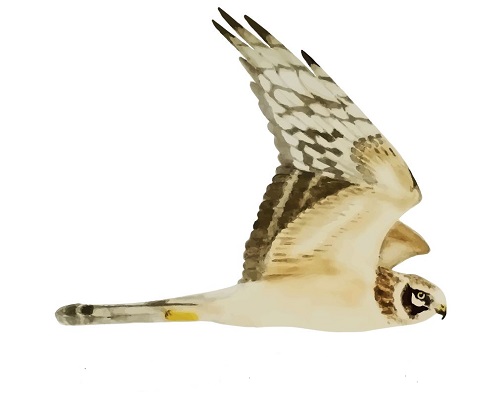Her på Skagen Fuglestations blog bringes korte nyheder i dagbogsformat om hændelser på fuglestationen.
The team is growing
I woke up this morning at the usual time to go ringing at Kabeltromlen. It was a bit weird to be on my own, but I did not expect there to be many birds (again due to rain over the sea and in the south of Sweden and Norway during the night, as well as southerly winds), so I told Bjørn he might be better off going to the migration count instead. So, I left an hour before sunrise to open the nets and was greeted by lots of mosquitos and incoming fog on the way. After opening the nets and instead of waiting for half an hour alone with hundreds of mosquitos, I walked to the beach to see what was happening there. And there was happening quite a bit (which proved me right, probably to tell Bjørn to go there instead): I saw 2 green sandpipers (svaleklire), which I have not seen in Skagen at all, I think, and at least 5 golden plovers (Hjejle) roosting on the beach, next to the usual dunlins (almindelig ryle), and lots of ringed plovers (stor præstekrave).
Either way, I could not stay to enjoy the view, since somebody had to check the nets, and seeing that I was on my own, that somebody was me. I went out and had a couple birds in the first few nets which had never caught anything in the last few weeks, so I was getting my hopes up too high, for sure. I had a nice first hour with some birds – although only local breeding birds, but then there was a long stretch of almost nothing. I finally closed the nets early after two empty net checks.
In the first net check, however, there was a rather interesting bird: a blackcap (munk). Now, you might say, they are quite common here, so not that interesting really (mind you, I think they are very underrated, seeing that they are probably the most audible of beautiful spring sounds in most of Europe), but this one was special: it had a tiger-striped head. Since most birds are now in moult (they need to change their feathers regularly, because they wear off and then are not good for insulation, and neither for flying, and just after the breeding season and before migration seems a good time for most birds – especially the ones that are not in a hurry to leave, because they are not going to the other end of the globe), seeing two plumages on one bird is not so surprising. We see it every day on the shorebirds (ryle) out on the beach, as well as in the eider ducks (ederfugl) in the sea. However, after closer inspection I found that this bird was not actually moulting. It was in completely juvenile plumage. Maybe he was friends with the baby red-necked grebes (gråstrubet lappedykker) from Skarvsøen, because they too have a striped head in their juvenile plumage.
Anyway, I did some research in the books and apparently the brown cap of juvenile blackcaps can have different degrees of light and brown dark, as well as black, in their crowns. It is just not something we see very often, and it looks really funny:

Meanwhile, the team at the observation, joined by Hendrik on his last morning, observed lots of gannets (sule) fishing on the shores, also the still present Atlantic skua (almindelig kjove), and several dozens of golden plovers (hjejle) passing. Highlight of the morning was probably an adult female red-footed flacon (aftenfalk), a species that is normally mainly seen here in the spring. Later, a merlin (lærkefalk) passed by as well.
In the afternoon, two new volunteers arrived: Hayley from England, who will stay for three months and has some years of ringing experience in England. She is hoping to see many new species in Skagen and would be delighted if she got to ring a bluethroat. And Gustav, he is Danish and has volunteered here before but only for a few days. Obviously, he liked it, so he chose to come here for his internship for his studies and will stay for more than 3 months! The autumn team is finally getting shape.
Henrik and Karen left us around noon, and two other guests will move into the apartment tonight. They were delayed on their way here, so we did not get to meet them before we went to bed, however.
Ringing (Kabeltromlekrattet)
Munk (Blackcap) - 2
Tornsanger (Common Whitethroat) - 3
Gærdesanger (Lesser Whitethroat) - 2
Rørsanger (Reed Warbler) - 1
Gransanger (Chiffchaff) - 1
Total: 9
People: Hayley Land, Gustav Nyberg , Martina Hillbrand, Simon Kiesé, Bjørn Laursen, Simon S. Christiansen, Lisa Vergin, Morten Christiensen, Kristine og Jan Hjort Christensen
A link to today's observations from volunteers and local observers.



